| Mapping
Cassino
By David Murray
May 2012
The area depicted by the Cassino
'44 game
map took some time to develop.
In order to
provide a good simulation of all four battles
the following areas would need to be shown:
- Cassino town and the monastery
- Monte Castellone
- Sant’ Angelo
- Cairo
- The barracks
- Pignataro
The area below is a satellite image depicting
this area. The white bar shows 1 km (5 hexes);
north is to the right:

The next decision was on the orientation
of the hex grid. With the Rapido River and
the base of the Massif running pretty much
north to south, running the hex grid
along that axis would facilitate
scenarios crossing the Rapido and attacks
along the road north of Cassino.
Next a hex grid was matched to the satellite
map; this created a playing area of 51x37
hexes (approx. 10 km x 7.5 km).
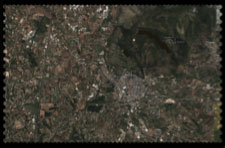 With
the basic parameters of the game map established
it was time to get creative!
The Liri Valley The
satellite image clearly shows the route of
the Rapido and Gari rivers as well as the
road network. A little research revealed
that the courses of the rivers have not been
modified since the 1940s,
and so the satellite pictures would provide
accurate information on their course.
The creation of the map for the Liri Valley
was relatively straightforward. It started
with custom graphics for a small area of
farmland. The section of custom "farmland"
graphic was cloned, blended, duplicated and
rotated until the valley floor was covered
and the desired visual effect was gained.

The rivers were then added, and the villages
of Sant’ Angelo, Cairo and Pignataro.
The railway was placed next. Highway 6, the
main route to Rome in 1944, is no longer
the main road and the satellite images show
a new dual carriageway, but Highway 6
can be easily identified and plotted on the
game map.

The Massif Without
doubt the Massif was the most difficult aspect
of making the map. There are no published
Panzer Grenadier maps
that include terrain with the elevation of
the Cassino Massif. Initially the thought
was to use contour lines to show elevation,
but despite many attempts of showing varying
elevation contour lines this idea was dropped.
Line of sight and relative elevation of
enemy units were too difficult to calculate.
The revised map shows seven elevation levels.
The highest point on the proposed map is
Monte Castellone at 771 meters. Using seven
elevation levels allowed each level to be
in increments of approximately 100 m. The
700 m elevation level is slightly stretched
to include the summit of Monte Castellone
at 771 m.
Overlaying accurate topographical maps,
correctly scaled, on to the base
map allowed an accurate recreation of
the Massif. The first graphic shows an overlay
made in the pre-war period by the Italian
military ordnance service, the second by
the New Zealanders during the campaign:
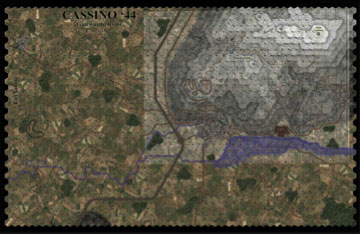

The maps indicate summits and the New Zealand
map has the route of the "Cavendish
road" that was improved by the Indian
troops to allow tanks to access the Massif.
Areas of cliff and Albaneta farm are also
clearly marked.
The road up to Monte Cassino offered a few
problems, as the 200m hex grid was insufficient
to accurately map it without hexes showing
two sections of road, which would be awkward
in terms of rules needed. Ultimately the
road was a little simplified but still retains
the distinctive ‘snaking’ as
it climbs the massif.

Cassino Town
Both the Italian and New Zealand maps show
to scale the extent of Cassino town, and
accurately place the railway station, the
barracks and the "Hummock." Again
using these overlays allowed these features
to be accurately placed.
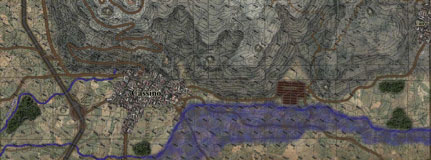
At each stage of the process the developing
map was also checked with the satellite image
to ensure accurate placement.
Other Features
The Germans dammed the Rapido in 1944 in
order to flood the area north of Cassino
town. Accurate details of the extent of the
flooding are difficult to assess from the
battle reports. However a few available details
enable certain points to be identified, and
using the elevation information on the Italian
ordnance map it is possible to estimate the
extent of the flooding.
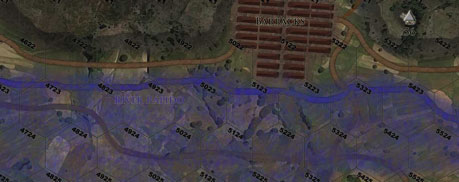
During the battles in the Liri Valley during
May, the 17th Indian Brigade had a fierce
fight over a horseshoe shaped hill some 1
km west of Sant’ Angelo.
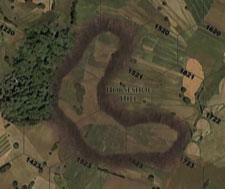
The Germans had blown large holes in the
railway embankment east of the railway station
to stop it being used as a route for armour
into the valley.

Final Comments
The map has been very challenging to create
but I feel quite pleased with the final product.
It is very accurate and I hope ascetically
pleasing. However, how the map works as a
game tool was at the forefront
of the design process.
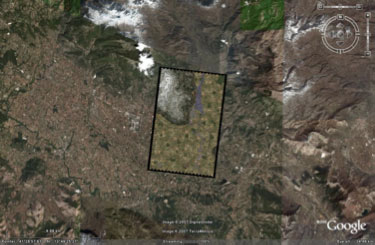
Game map overlaid on satellite image.
|
